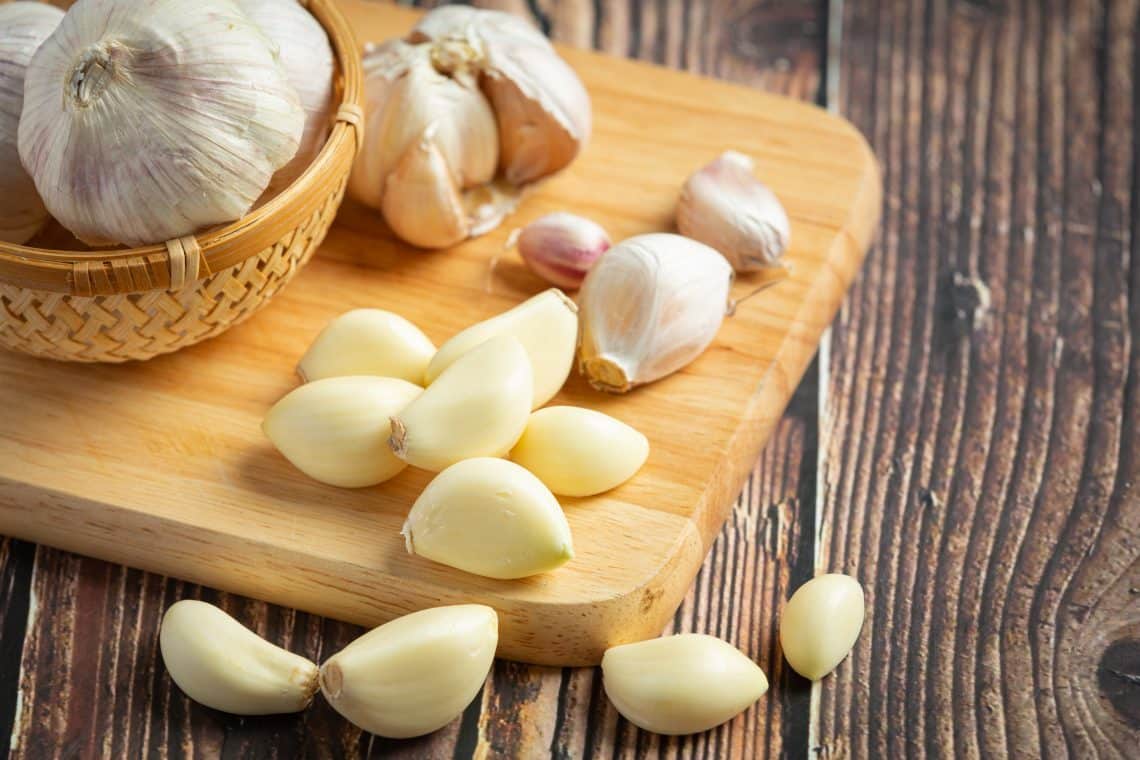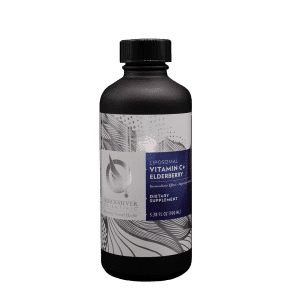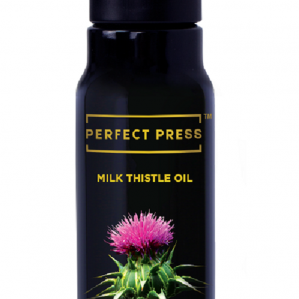What You Need To Know About The Health Benefits of Garlic – Garlic (Allium sativum) and Its 6 Amazing Health Benefits: A Comprehensive Review
Garlic (Allium sativum) and Its Health Benefits: A Comprehensive Review
Overview
The Health Benefits of Garlic – Garlic (Allium sativum) is a bulbous plant that belongs to the Allium genus, which also includes onions, shallots,
Chemical Composition: Garlic contains several bioactive compounds, including allicin, diallyl disulfide, and S-allyl cysteine. Allicin is formed when garlic is crushed or chopped and is responsible for garlic’s characteristic smell and taste. Diallyl disulfide and S-allyl cysteine are other sulfur-containing compounds found in garlic that have been studied for their health-promoting effects.
A brief history of garlic
Garlic (Allium sativum) has a long history of use dating back thousands of years. Here is an overview of the history of garlic:
- Ancient Times: Garlic is believed to have originated in Central Asia and has been cultivated for over 5,000 years. It was used by the ancient Egyptians, who believed in its medicinal properties and used it as food, medicine, and as a form of currency. Garlic bulbs were found in the tomb of King Tutankhamun, indicating its importance in ancient Egyptian culture.
- Ancient Greece and Rome: Garlic was also valued in ancient Greece and Rome. Greek athletes and soldiers ate garlic before competitions and battles for strength and endurance. The Roman naturalist Pliny the Elder wrote about garlic’s medicinal properties in his work “Natural History.”
- Medieval Europe: Garlic was used in medieval Europe for its medicinal properties and as a protection against evil spirits and vampires. It was also used to ward off the plague during the Black Death.
- Middle Ages: Garlic was an important part of medieval European cuisine and was used to flavor food and as a remedy for various ailments. It was also believed to have aphrodisiac properties.
- Renaissance and Enlightenment: Garlic continued to be used in Europe during the Renaissance and Enlightenment periods. It was valued for its culinary and medicinal properties and was used to treat a variety of conditions, including infections and digestive issues.
- Modern Times: Garlic remains a popular ingredient in cuisine and medicine around the world. It is used in a variety of dishes, including pasta, soups, and stir-fries. It is also used in traditional medicine for its antimicrobial, antioxidant, and anti-inflammatory health benefits.
Overall, garlic has a rich history of use spanning thousands of years and continues to be valued for its culinary and medicinal properties to this day.
Why Use Garlic?

Health Benefits of Garlic:
- Antimicrobial Properties: Garlic has been used traditionally for its antimicrobial properties as a health benefits. Studies suggest that garlic may help fight bacterial, viral, and fungal infections. Allicin, a compound found in garlic, has been shown to have antibacterial activity against a wide range of bacteria, including antibiotic-resistant strains.
- Anticancer Effects: Garlic has been studied for its potential anticancer effects. Some studies suggest that garlic may help prevent certain types of cancer, including stomach and colorectal cancer. As a health benefits, the sulfur-containing compounds in garlic are thought to play a role in its anticancer effects by inhibiting the growth of cancer cells and promoting their death.
- Antioxidant Activity: Garlic contains antioxidants, such as flavonoids and selenium, which help protect the body from oxidative stress and damage caused by free radicals as health benefits. Oxidative stress has been implicated in the development of various chronic diseases, including heart disease and cancer.
- Anti-Inflammatory Properties: Garlic has been shown to have anti-inflammatory health benefits, which may help reduce inflammation in the body. Chronic inflammation is linked to the development of many diseases, including heart disease, diabetes, and cancer.
- Cardiovascular Benefits: Garlic has long been used for its cardiovascular benefits. Studies suggest that garlic may help lower cholesterol levels, reduce blood pressure, and improve blood flow, which can reduce the risk of heart disease and stroke.
- Immune-Boosting Effects: Garlic has been studied for its immune-boosting effects. Some studies suggest that garlic may help enhance immune function, which can help the body fight off infections and diseases.
Anticarcinogen properties of garlic
Garlic has been studied for its potential anticarcinogenic properties, which are believed to be due to its various bioactive compounds. Here are some ways in which garlic may exert anticarcinogenic health benefits:
- Antioxidant Activity: Garlic contains antioxidants, such as flavonoids and selenium, which help protect cells from damage caused by free radicals. Free radical damage is implicated in the development of cancer, and antioxidants may help prevent this damage.
- Anti-inflammatory Effects: Chronic inflammation is associated with an increased risk of cancer. Garlic has been shown to have anti-inflammatory effects, which may help reduce the risk of cancer development.
- Immune Modulation: Garlic has been studied for its effects on the immune system. Some studies suggest that garlic may help enhance immune function, which can help the body recognize and destroy cancer cells as a health benefits.
- Induction of Apoptosis: Apoptosis, or programmed cell death, is a natural process that helps regulate cell growth and prevent the formation of tumors. Some studies suggest that garlic compounds have health benefits that may help induce apoptosis in cancer cells, thereby inhibiting tumor growth.
- Inhibition of Angiogenesis: Angiogenesis is the process by which tumors develop new blood vessels to support their growth. Some studies suggest that garlic compounds may help inhibit angiogenesis, thereby limiting the blood supply to tumors and slowing their growth.
- Detoxification: Other health benefits? Garlic compounds may help the body detoxify carcinogens, reducing their potential to cause cancer.
- Regulation of Cell Cycle: Garlic compounds may help regulate the cell cycle, preventing abnormal cell growth and the formation of tumors.
While these mechanisms suggest that garlic may have many health benefits including anticarcinogenic properties, more research is needed to fully understand the effects of garlic on cancer prevention and treatment. It is important to note that garlic should not be used as a substitute for cancer treatment without consulting healthcare professional. Anyone with cancer should consult with their healthcare provider before making any changes to their treatment plan.
The different types of garlic
There are several different types of garlic, each with its own unique flavor profile, characteristics and health benefits. Some of the most common types of garlic include:
- Softneck Garlic (Allium sativum var. sativum): Softneck garlic is the most common type of garlic found in grocery stores. It has a soft stem that is easy to braid, making it popular for decorative purposes. Softneck garlic bulbs typically have multiple layers of cloves and a milder flavor compared to hardneck varieties.
- Hardneck Garlic (Allium sativum var. ophioscorodon): Hardneck garlic has a hard stem that grows up through the center of the bulb, which makes it difficult to braid. Hardneck garlic bulbs typically have fewer, larger cloves than softneck varieties and are known for their stronger, more complex flavor.
- Elephant Garlic (Allium ampeloprasum): Despite its name, elephant garlic is not a true garlic but rather a type of leek. It has large cloves and a mild, garlic-like flavor. Elephant garlic is often used in cooking as a substitute for true garlic when a milder flavor is desired.
- Creole Garlic: Creole garlic is a type of softneck garlic known for its spicy flavor and purple-striped wrappers. It is commonly grown in the southern United States and has a shorter storage life than other types of garlic.
- Silverskin Garlic (Allium sativum var. sativum): Silverskin garlic is a type of softneck garlic known for its long storage life. It has a strong, pungent flavor and is often used for braiding due to its soft stems.
- Rocambole Garlic (Allium sativum var. ophioscorodon): Rocambole garlic is a type of hardneck garlic known for its rich, complex flavor. It has fewer, larger cloves than other types of garlic and is often considered one of the best-tasting varieties.
- Porcelain Garlic (Allium sativum var. ophioscorodon): Porcelain garlic is a type of hardneck garlic known for its large cloves and bold, spicy flavor. It has a thick, white skin and is prized by chefs for its intense flavor.
- Purple Stripe Garlic (Allium sativum var. ophioscorodon): Purple stripe garlic is a type of hardneck garlic known for its purple-striped bulbs and strong, spicy flavor. It is often used in gourmet cooking for its bold taste.
These are just a few examples of the many different types of garlic available. Each type has its own unique flavor profile, health benefits, and culinary uses, making garlic a versatile ingredient in a wide range of dishes.
What is the best way to use garlic
The best way to take garlic depends on the desired outcome and individual preferences. Here are some common methods for consuming garlic:

fresh raw garlic ready to cook
- Raw Garlic: Eating raw garlic is believed to provide the most health benefits, as some of the beneficial compounds in garlic are destroyed by cooking. However, raw garlic can be pungent and may cause digestive discomfort in some people.
- Cooked Garlic: Cooking garlic can help mellow its flavor and make it easier to digest. While cooking may reduce some of the health benefits of garlic, it can still be a nutritious addition to many dishes.
- Garlic Supplements: Garlic supplements are available in various forms, including capsules, tablets, and oils. These supplements are often standardized to contain specific amounts of garlic’s active compounds, such as allicin. Garlic supplements can be a convenient way to incorporate garlic into your routine and enjoy its health benefits, especially if you do not enjoy the taste of raw garlic.
- Aged Garlic Extract: Aged garlic extract is a special form of garlic that has been aged for extended periods, which is believed to enhance its beneficial compounds and health benefits and reduce its pungency. Aged garlic extract is available in supplement form and is often used to support heart health.
- Garlic Oil: Garlic oil is another way to consume garlic’s beneficial compounds. Garlic oil can be used in cooking or taken as a supplement. However, garlic oil supplements may not provide the same health benefits as raw garlic, as some of the compounds in garlic are volatile and may be lost during processing.
- Garlic Powder: Garlic powder is a convenient way to add garlic flavor to dishes. However, garlic powder may not provide the same health benefits as fresh garlic, as some of the beneficial compounds may be lost during processing.
It is important to note that while garlic is generally safe for most people when consumed in moderate amounts as a food ingredient, high doses of garlic supplements may cause side effects and interact with certain medications. It is recommended to consult with a healthcare provider before taking garlic supplements, especially if you are pregnant, breastfeeding, or taking medications.
What are the risks and side effects?
Garlic is generally considered safe for most people when consumed in moderate amounts as a food ingredient. However, there are some risks and side effects associated with garlic, especially when consumed in large quantities or taken as a supplement. Some of the potential risks and side effects of garlic include:
- Digestive Issues: Some people may experience digestive issues such as heartburn, gas, or upset stomach when consuming garlic, especially raw garlic.
- Allergic Reactions: In some cases, people may be allergic to garlic and may experience symptoms such as skin rash, itching, or difficulty breathing after consuming garlic.
- Blood Thinning: Garlic may have blood-thinning effects, which can increase the risk of bleeding, especially in people taking blood-thinning medications or with bleeding disorders.
- Interaction with Medications: Garlic may interact with certain medications, including blood-thinning medications, HIV medications, and some types of birth control pills. It is important to consult with a healthcare provider before taking garlic supplements if you are taking any medications.
- Garlic Breath and Body Odor: Garlic can cause bad breath and body odor, which can be bothersome for some people.
- Skin Irritation: Although raw garlic has great health benefits, applying raw garlic to the skin can cause irritation, redness, or burning in some people.
- Hypoglycemia: Garlic may lower blood sugar levels, which can be a concern for people with diabetes or hypoglycemia. Monitoring blood sugar levels closely is recommended.
- Gastrointestinal Irritation: In some cases, consuming large amounts of garlic or taking garlic supplements may irritate the gastrointestinal tract and cause symptoms such as nausea, vomiting, or diarrhea.
It is important to note that these risks and side effects are typically associated with consuming large amounts of garlic or taking garlic supplements, rather than using garlic as a culinary ingredient. If you have any concerns about the potential risks of garlic, it is recommended to consult with a healthcare provider before making any changes to your diet or supplementation routine.
How much Garlic should be used?
The optimal number of garlic to consume depends on the form of garlic (raw, cooked, supplements) and the desired health benefits. Here are some general guidelines based on the available evidence:
- Raw Garlic: Eating 1-2 cloves of raw garlic per day is considered safe and may provide health benefits. However, consuming larger amounts of raw garlic may cause digestive issues and other side effects in some people.
- Cooked Garlic: Cooking garlic can reduce its potency, so you may need to consume more cooked garlic to achieve the same health benefits as raw garlic. Including garlic in your daily cooking is a good way to incorporate it into your diet.
- Garlic Supplements: The dosage of garlic supplements can vary depending on the product and its formulation. It is recommended to follow the manufacturer’s instructions on the label or consult with a healthcare provider for personalized advice.
- Aged Garlic Extract: Aged garlic extract is often used in studies investigating its health benefits. Typical doses range from 600 mg to 1,200 mg per day, divided into multiple doses.
- Garlic Oil: Garlic oil supplements are typically standardized to contain a specific amount of allicin or other active compounds. Follow the manufacturer’s instructions for dosage recommendations.
- Garlic Powder: There are no specific dosage recommendations for garlic powder. Use it in cooking as a flavorful addition to your dishes.
It is important to note that garlic supplements are not regulated by the FDA, so the quality and potency of these products can vary. It is recommended to choose a reputable brand and consult with a healthcare provider before starting any supplement regimen, especially if you are pregnant, breastfeeding, or taking medications.
After thoughts
Garlic is a versatile herb that has been used for centuries for its culinary and medicinal properties. Scientific research supports many of the traditional uses of garlic, suggesting that it may have antimicrobial, anticancer, antioxidant, anti-inflammatory, and cardiovascular protective effects. However, more research is needed to fully understand the mechanisms of action and optimal doses of garlic for various health benefits. Overall, garlic is a valuable addition to a healthy diet and may offer numerous health benefits.
Start incorporating garlic into your diet today to help start enjoying its health benefits and experience a revitalized optimal health.
For natural and healing remedies, products, and supplements to help you live your most optimal healthy life, visit our store here!
Remember: Own Your Health!
If you enjoyed the information presented in this article, Please Share It. Help us reach more people and keep this website going! Thank you!
Note: The information provided in this article is for educational purposes only and should not be considered medical advice. Please consult with a healthcare professional or registered dietitian before making any significant changes to your diet or lifestyle.
Frequently Asked Questions (FAQ)
Here are some frequently asked questions about garlic, along with their answers:
- Is garlic good for your health?
- Yes, garlic is considered to have great health benefits due to its various bioactive compounds, such as allicin, which have been studied for their antimicrobial, antioxidant, anti-inflammatory, and cardiovascular protective effects.
- Can garlic help lower cholesterol levels?
- Some studies suggest that garlic may help lower total cholesterol and LDL cholesterol levels. However, more research is needed to confirm these effects.
- Does garlic boost the immune system?
- Garlic has been studied for its potential immune-boosting effects. Some studies suggest that garlic may help enhance immune function, which can help the body fight off infections and diseases.
- Can garlic prevent cancer?
- Garlic has been studied for its potential anticancer effects. Some studies suggest that garlic may help prevent certain types of cancer, but more research is needed to fully understand its effects.
- Is garlic safe to consume during pregnancy?
- While garlic is generally considered safe for consumption during pregnancy when used as a food ingredient, pregnant women should avoid consuming large amounts of garlic supplements, as their safety has not been well studied.
- Can garlic interact with medications?
- Yes, garlic may interact with certain medications, including blood-thinning medications, HIV medications, and some types of birth control pills. It is important to consult with a healthcare provider before taking garlic supplements if you are taking any medications.
- Is garlic effective for treating colds and flu?
- Garlic has been traditionally used for its antimicrobial properties and may help alleviate symptoms of colds and flu. However, more research is needed to confirm its effectiveness for these purposes.
- Can garlic help with weight loss?
- Some studies suggest that garlic may have a modest effect on weight loss by increasing metabolism. However, more research is needed to determine the optimal dose and effectiveness of garlic for weight loss.
- Does garlic have any side effects?
- Garlic is generally safe for most people when consumed in moderate amounts as a food ingredient. However, consuming large amounts of garlic or taking garlic supplements may cause digestive issues, allergic reactions, and other side effects in some people.
References:
- Bayan L, Koulivand PH, Gorji A. Garlic: a review of potential therapeutic effects. Avicenna J Phytomed. 2014;4(1):1-14.
- Ried K, Toben C, Fakler P. Effect of garlic on serum lipids: an updated meta-analysis. Nutr Rev. 2013;71(5):282-99.
- Rahman K. Effects of garlic on platelet biochemistry and physiology. Mol Nutr Food Res. 2007;51(11):1335-44.
- Lanzotti V. The analysis of onion and garlic. J Chromatogr A. 2006;1112(1-2):3-22.
- Ankri S, Mirelman D. Antimicrobial properties of allicin from garlic. Microbes Infect. 1999;1(2):125-9.
- Block, E. (2010). Garlic and Other Alliums: The Lore and the Science. Royal Society of Chemistry.
- Davis, S. C. (2015). Garlic: A review of potential therapeutic effects. Avicenna Journal of Phytomedicine, 4(1), 1–14.
- Hirsch, J. (1991). The Ultimate Garlic Book: A Guide to Nature’s Superfood. St. Martin’s Press.
- Moerman, D. E. (2010). Native American Food Plants: An Ethnobotanical Dictionary. Timber Press.
- Tattelman, E. (2005). Health effects of garlic. American Family Physician, 72(1), 103–106.
- Rivlin, R. S. (2001). Historical perspective on the use of garlic. The Journal of Nutrition, 131(3), 951S–954S.
- Herman-Antosiewicz, A., & Powolny, A. A. (2008). Anticancer effects of garlic. In Benzie, I. F. F., & Wachtel-Galor, S. (Eds.), Herbal Medicine: Biomolecular and Clinical Aspects (2nd ed.). CRC Press/Taylor & Francis.





























0 Comment